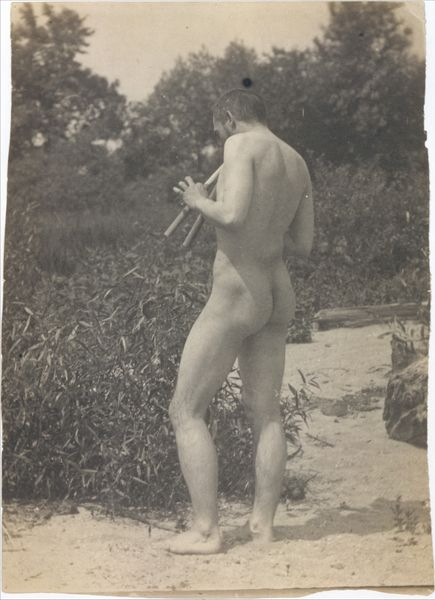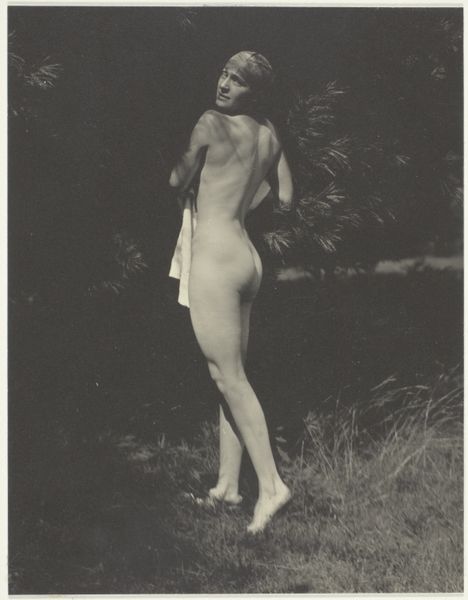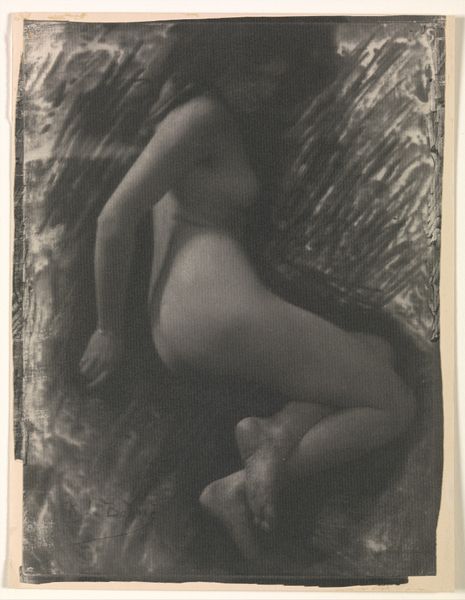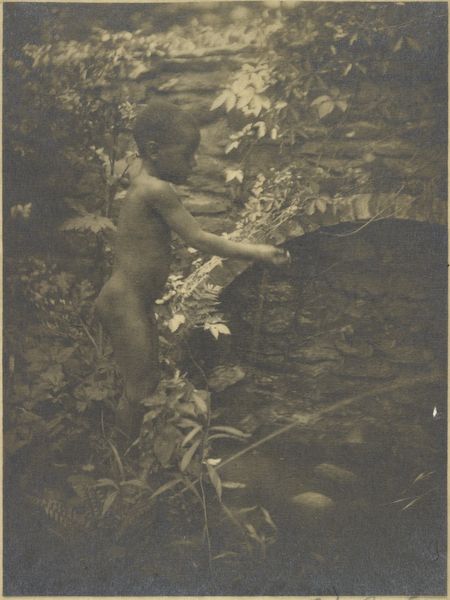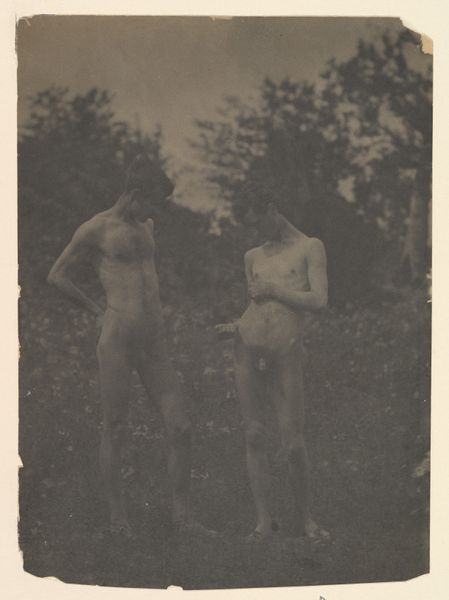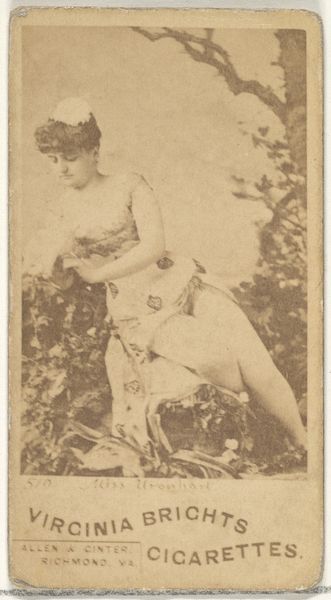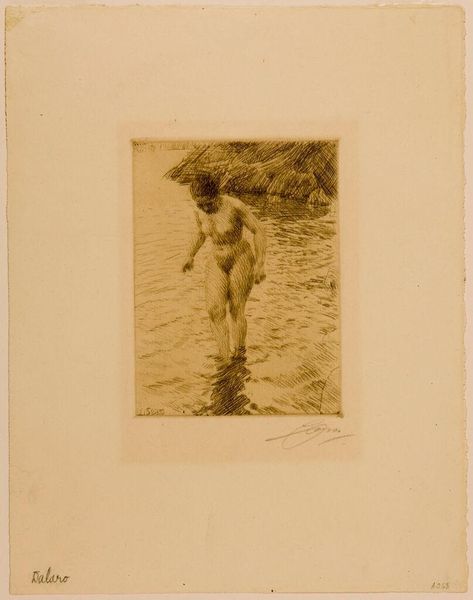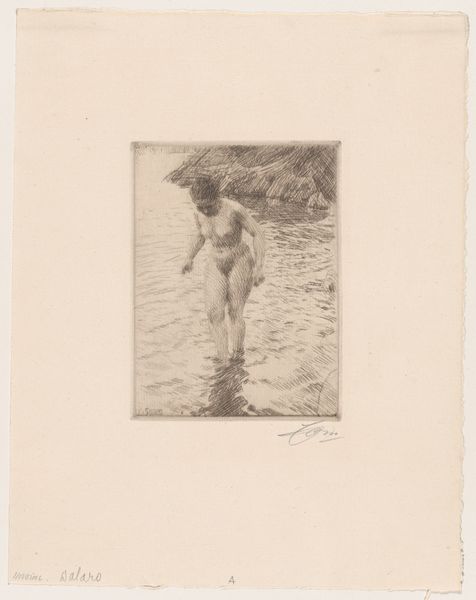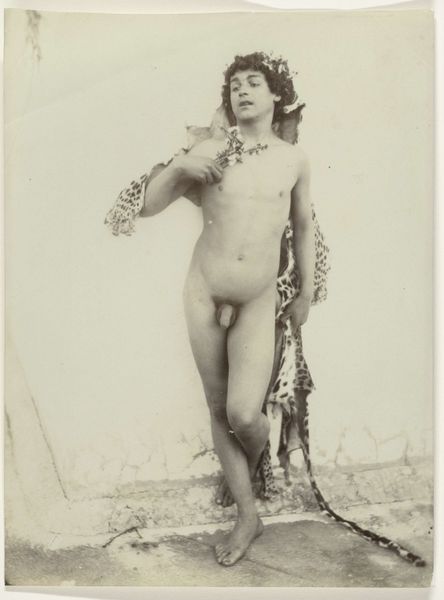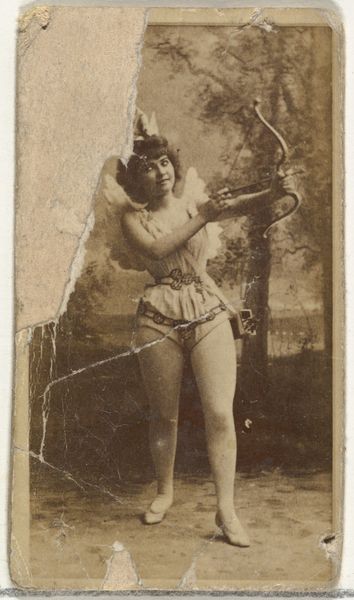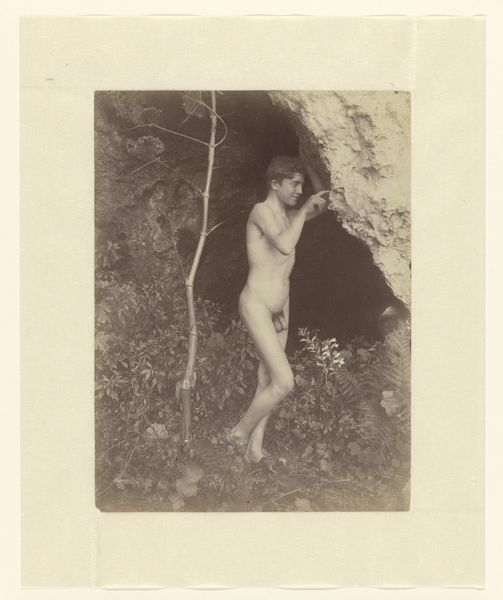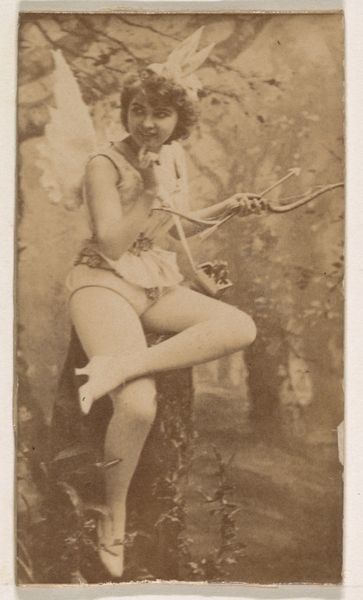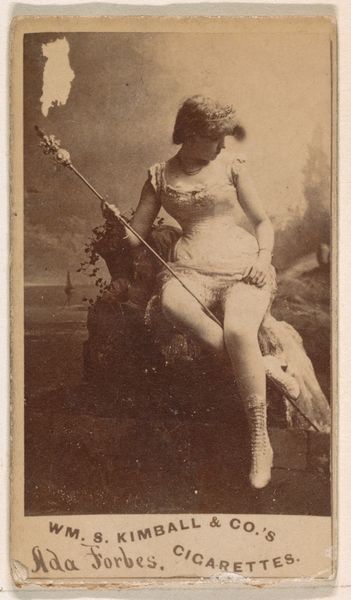![[Standing Male Nude with Pipes] by Thomas Eakins](/_next/image?url=https%3A%2F%2Fd2w8kbdekdi1gv.cloudfront.net%2FeyJidWNrZXQiOiAiYXJ0ZXJhLWltYWdlcy1idWNrZXQiLCAia2V5IjogImFydHdvcmtzLzcyMjczYWYyLWYwZTYtNGU5Ny1hZGYwLWE3ZDFiNmE0NTY2Mi83MjI3M2FmMi1mMGU2LTRlOTctYWRmMC1hN2QxYjZhNDU2NjJfZnVsbC5qcGciLCAiZWRpdHMiOiB7InJlc2l6ZSI6IHsid2lkdGgiOiAxOTIwLCAiaGVpZ2h0IjogMTkyMCwgImZpdCI6ICJpbnNpZGUifX19&w=3840&q=75)
photography, gelatin-silver-print
#
portrait
#
impressionism
#
charcoal drawing
#
photography
#
gelatin-silver-print
#
men
#
musical-instrument
#
academic-art
#
male-nude
Dimensions: 22.9 x 17.3 cm (9 x 6 13/16 in.)
Copyright: Public Domain
Editor: This is Thomas Eakins’ photograph, “Standing Male Nude with Pipes,” from the 1880s. It's a gelatin-silver print and it feels… staged, but also very natural. What kind of narrative do you see unfolding here? Curator: The pipe immediately catches my eye, and it makes me wonder, is this a modern take on the classical image of Pan, god of the wild, usually depicted with his pipes? Consider also how this nude man in nature departs from and subverts Victorian notions of decorum. Does Eakins propose a new ideal of masculine beauty rooted in American naturalism, far from the effete European dandy? Editor: That's a big shift, the contrast between European dandyism and this more grounded… almost primal figure. So, the setting and the instrument contribute to the overall feeling? Curator: Precisely. Think of what Pan represents – untamed nature, musicality, and male virility. Here the figure's connection with nature becomes a signifier of authenticity. It asks: can a modern American male find harmony and expression in the natural world? Editor: And that tree stump seems very deliberately placed as a natural prop. Does this piece fit into any broader artistic movements? Curator: Definitely. We see strong influences of academic art traditions, notably in its composition and its classical artistic nude subject. Also Eakins brings a naturalist vision influenced by emerging Impressionist painters and their interest in modern, everyday scenes. Does that analysis change your view? Editor: It definitely provides new perspectives, particularly how Eakins is playing with different symbols to deliver a powerful artistic commentary of manhood. Curator: Exactly! The beauty of such images lies in their power to evoke memory, prompt debate, and keep cultural symbols relevant for subsequent generations.
Comments
No comments
Be the first to comment and join the conversation on the ultimate creative platform.
